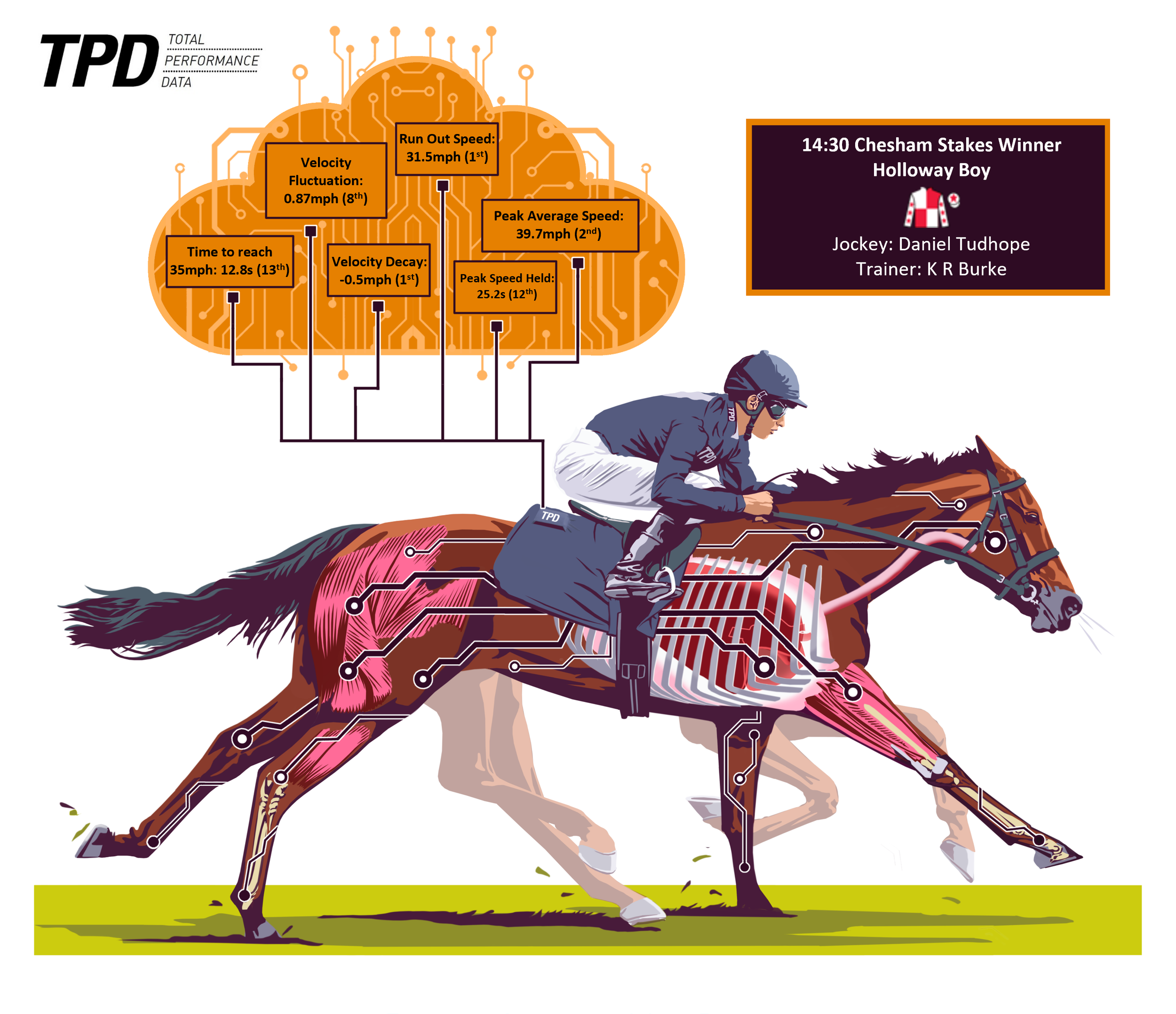By Vincent Souillat, TPD Commercial Executive
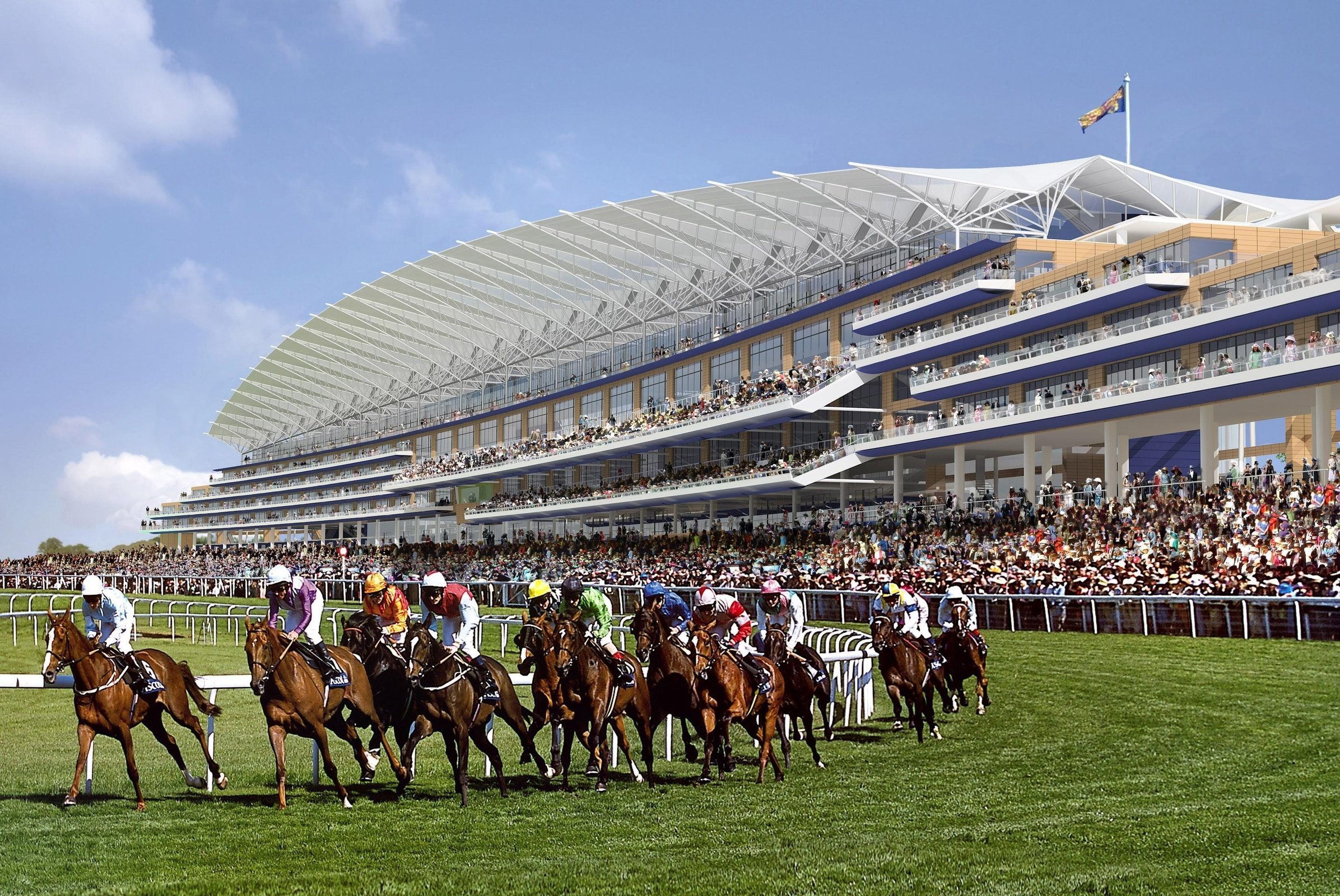



My first Royal Ascot week as a newly converted horse racing fan, needless to say that it did not disappoint! From the drama of the Crispy Cat and The Riddler incident to the nail-biting finish between Kyprios and Mojo Star in the Gold Cup, watching the best horses in the world compete at one of the world’s most prestigious venues lived up to expectations.
Coming from a sports science background, I find data fascinating. In the context of horse racing, not only does it provide you with a great insight into what occurred during a race, but it also allows for deeper analysis into the strengths and weaknesses of specific performances. Total Performance Data’s newly revealed post-race performance metrics for flat racing aim to deliver exactly that, a statistically backed perspective on the way a race was won or lost. As this is understandably new to most enthusiasts, we have produced a glossary of terms below covering the definition, unit of measure, calculation method, purpose, and interpretation of these performance metrics.
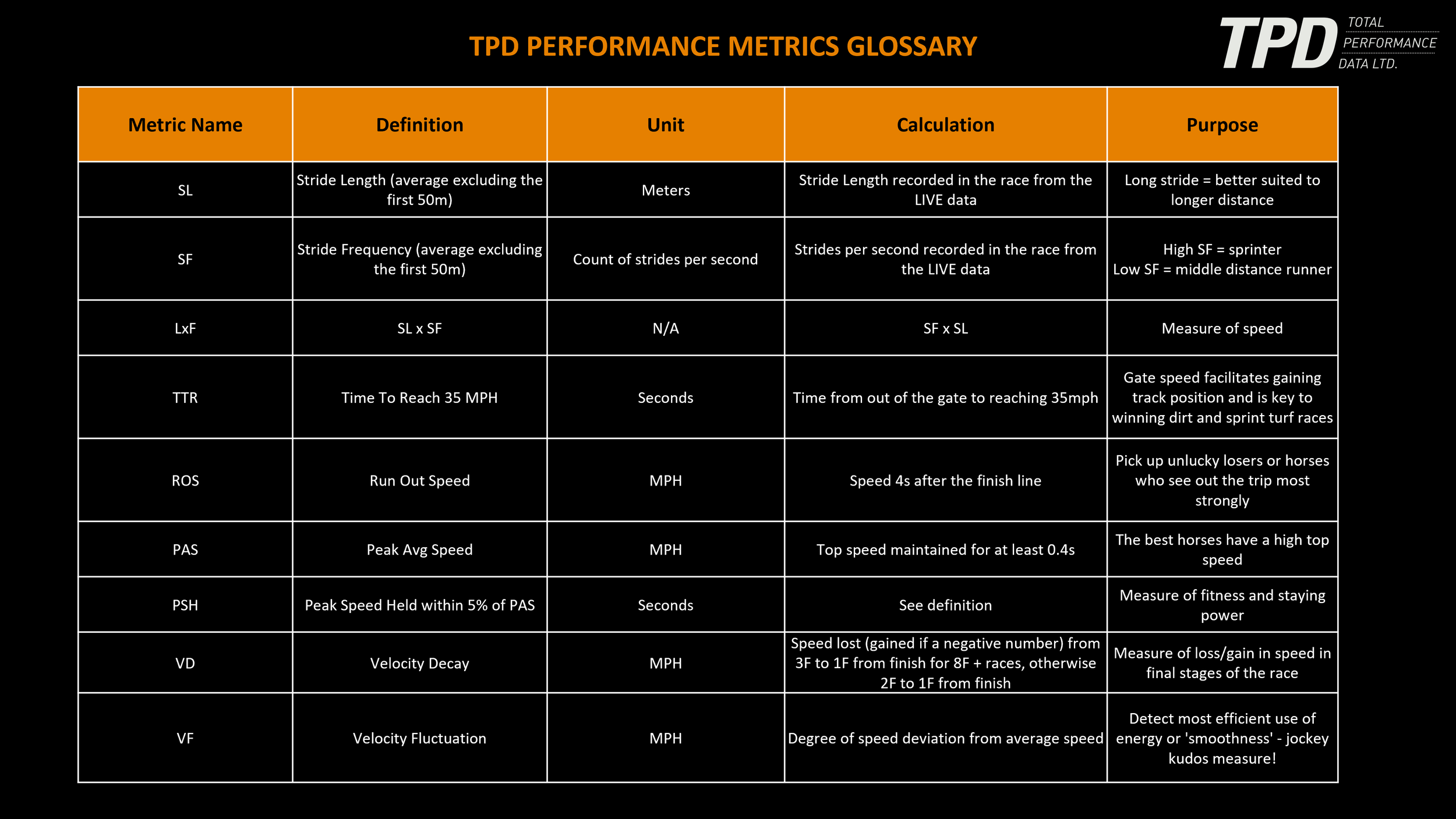



Let’s therefore have a look at our highlights from some of the week’s top performances incorporating TPD’s metrics in our analysis.
Nature Strip
The international King Stand sprint pitted the well fancied American runner and Breeders Cup champion, Golden Pal, against eight-time Australian Group 1 winner Nature Strip. It delivered a devastating performance from the Aussie sprinter. With Golden Pal struggling to get out of the stalls and not being able to catch up, Nature Strip despite not being the fastest out of the gates either, took control two furlongs from the finish line before sprinting away to win by four and a half lengths. Looking at the performance metrics from his run, Nature Strip topped the charts in the race for run out speed, peak average speed and velocity fluctuation. Indeed, his peak average speed of 44mph and velocity fluctuation of 3.29mph demonstrates a consistent yet dominant performance by the Chris Waller trained thoroughbred. Might his run out speed of 34.5mph after Ascot’s long uphill climb suggest he had energy left in the tank and could step up in trip to 6 Furlongs?
Nature Strip’s winning performance is highlighted below:
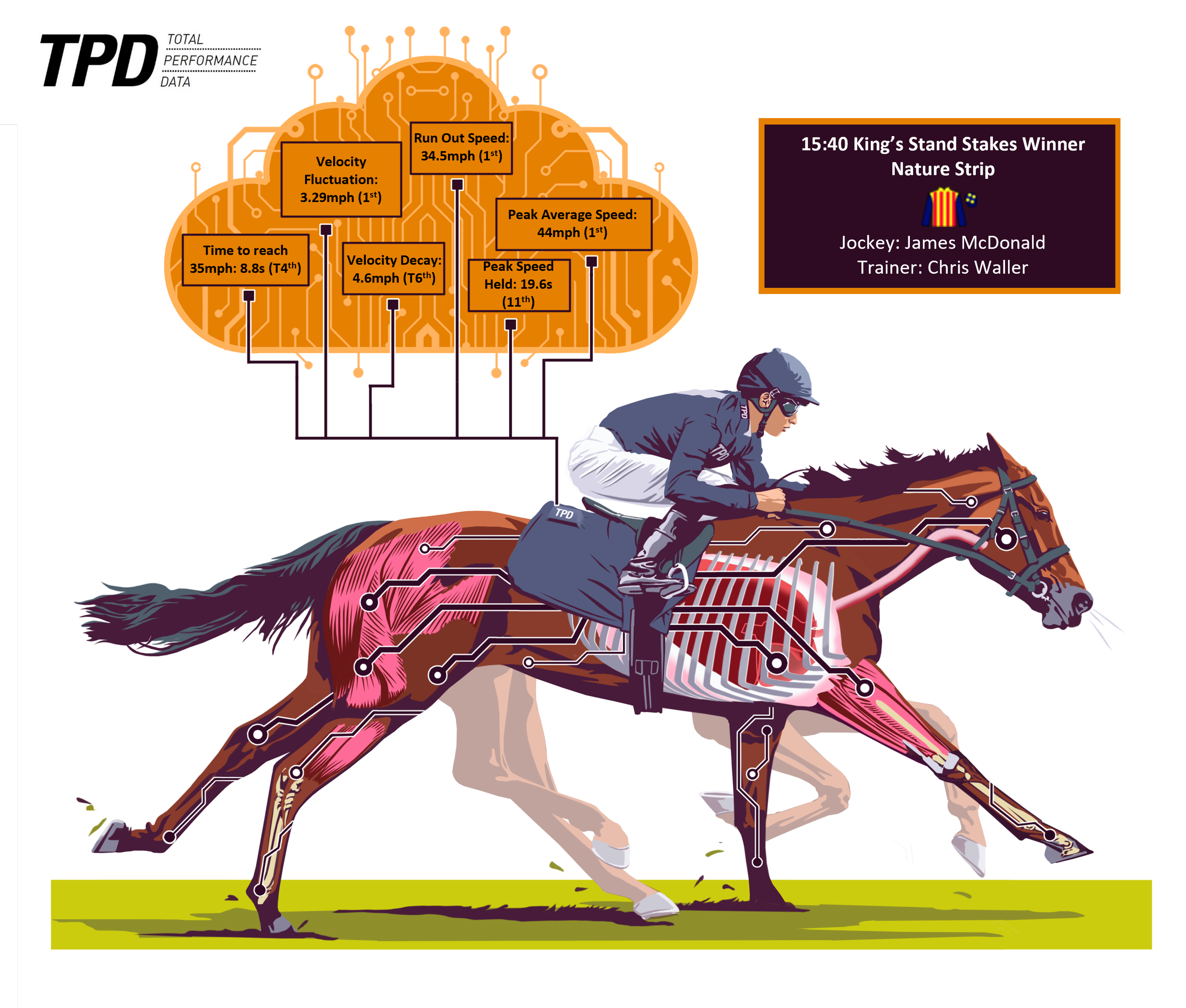



Dramatised
Dramatised’s run in the Queen Mary Stakes was the top-rated time performance of the week within that category. The winning timefigure was interestingly tied for the twelfth best in any juvenile race held at Royal Ascot since the year 2000. Dramatised, who had front-running fourth Love Reigns covered at all times throughout the five-furlong race, travelled admirably. She took the lead inside the final furlong and a half and held on resolutely to defeat Maylandsea by a length and three-quarters. There will no doubt be a temptation to step Dramatised up to six furlongs and considering her remarkable acceleration of 6.2s to reach 35mph in the race, the two-year-old could become a force to be reckoned with.
Dramatised’s winning performance is highlighted below:
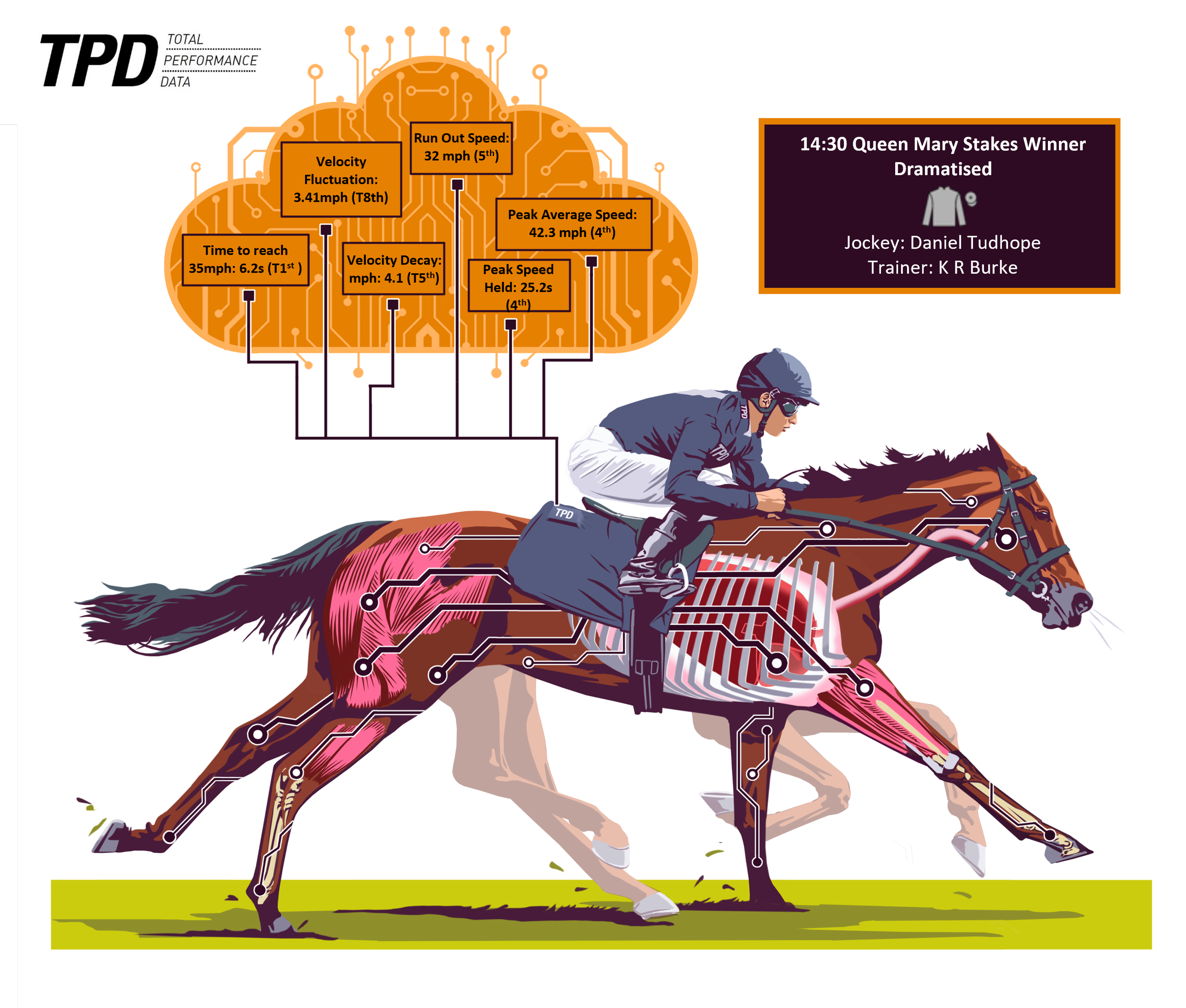



Eldar Eldarov
Despite having a lot of ground to make up in the finishing stage of the race, Eldar Eldarov capitalised on his incredible stamina to win the Queen’s Vase in a thrilling race at Royal Ascot. After winning at Nottingham and Newcastle, Roger Varian’s unbeaten star faced the toughest test of his young career to date when he was made the 5/2 favourite. Despite the fact that Eldar Eldarov maintained a speed within 5% of his top speed, or peak average speed, for 58.4 seconds (the most of any horse in the race), he still had the energy left for a deciding push in the last furlong and accounted for the 2nd best run out speed across all the runners. David Egan undoubtedly deserves credit for the way he managed the race, but Eldar Eldarov’s all-round performance demonstrated that he deserves to be considered a top-class stayer in the making.
Eldar Eldarov’s winning performance is highlighted below:
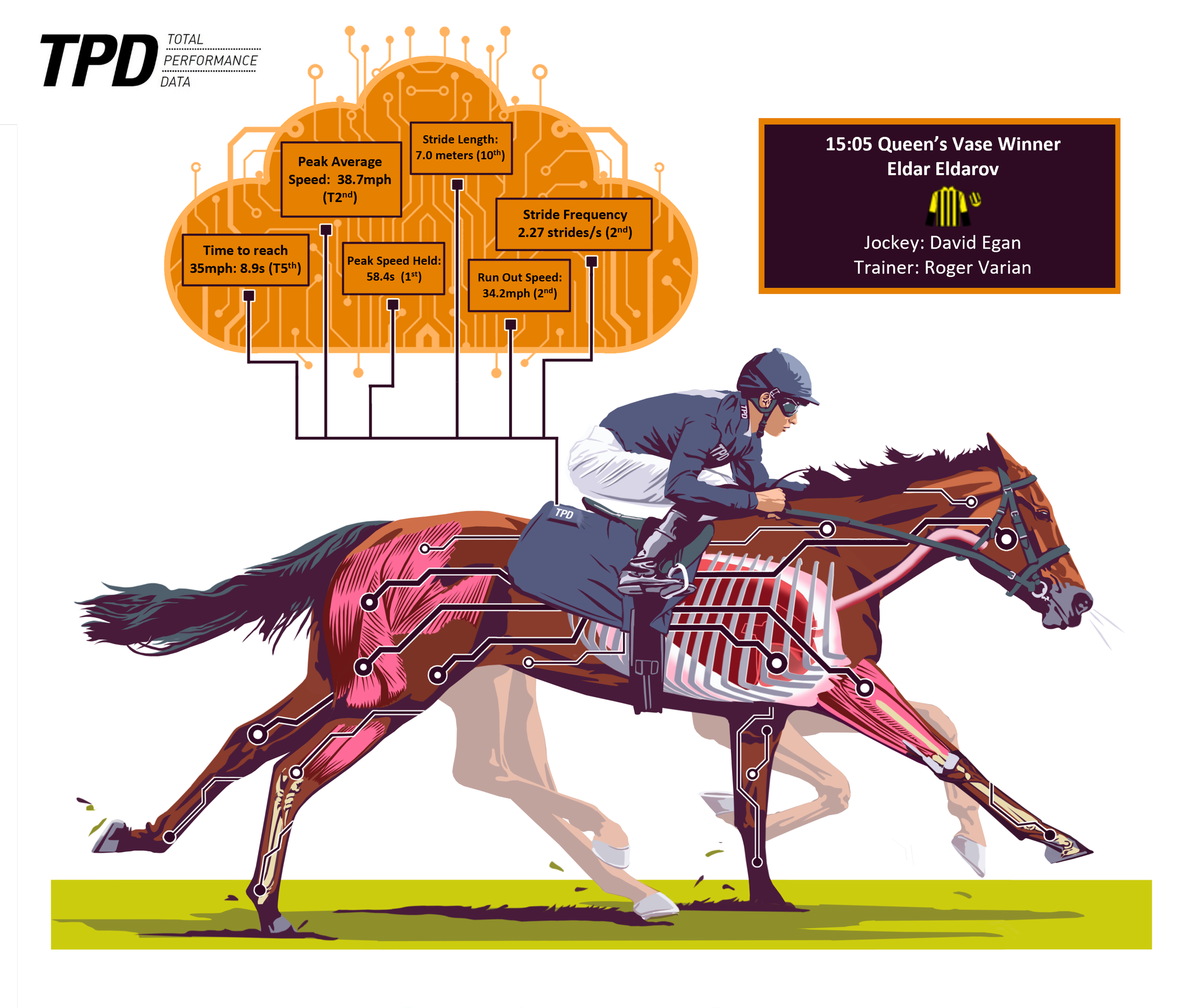



Kyprios
Although a huge amount of talk revolved around Stradivarius having to pull wide on the home stretch, our sectionals appear to show that he was not a particularly unlucky loser. Indeed, Kyprios outpaced Stradivarius in both the first and final three furlongs, but the biggest difference in those times notably occurred in the last furlong. Similarly to Eldar Eldarov’s performance, Kyprios maintained a speed within 5% of his top speed for 40.2 seconds, the most of any horse in the race and yet also registered the joint best run out speed across all runners. Despite a strong challenge from Mojo Star who registered the same run out speed of 33.6mph as Kyprios, the latter created a slight advantage at the final furlong mark to hold out and win the Gold Cup.
Kyprios’ winning performance is highlighted below:
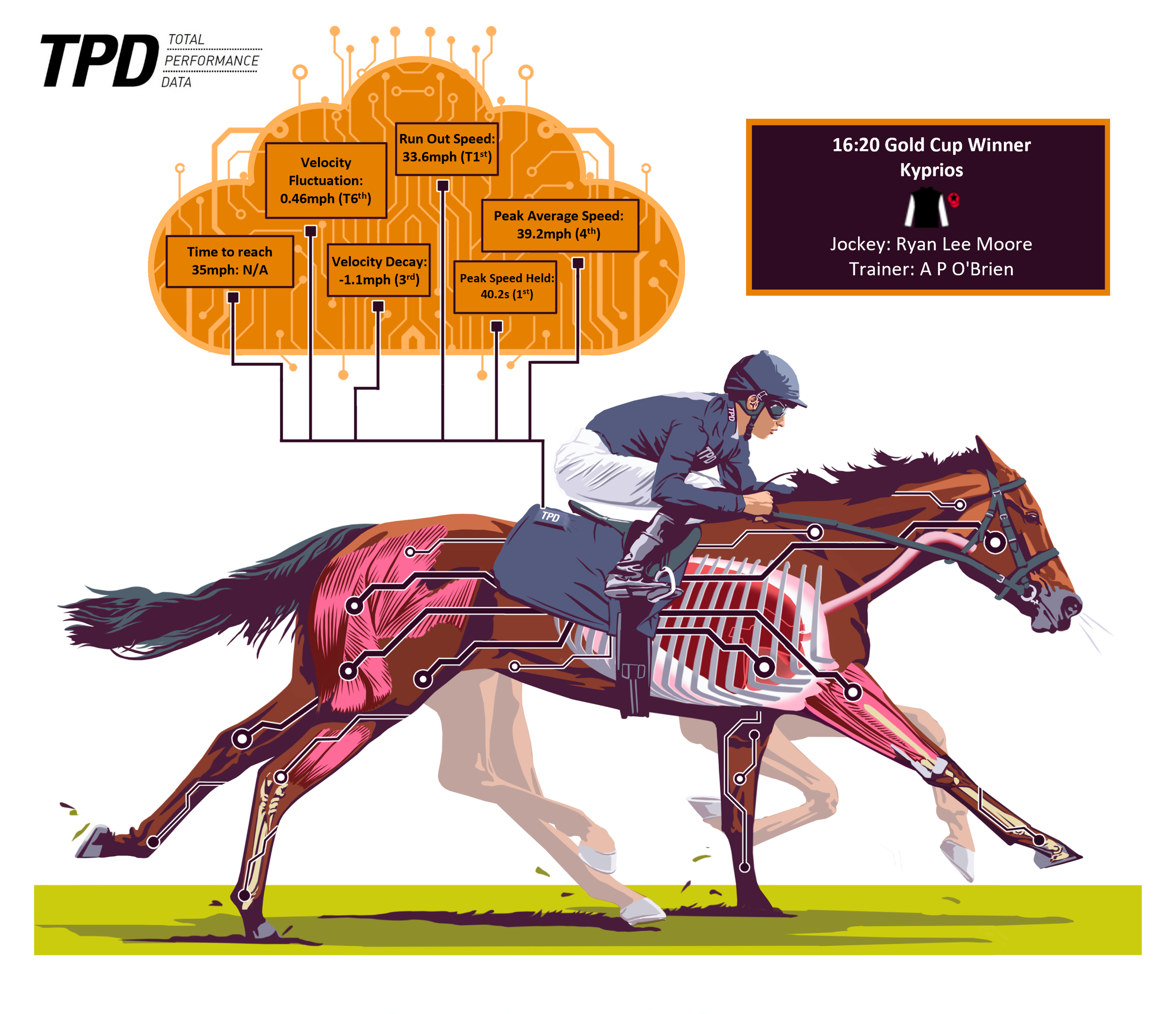



Holloway Boy
Last but not least in our list of standout performances from Royal Ascot is Holloway Boy’s, who came from the back of the field to claim the Chesham Stakes at 40-1! Saying he had a slow start would be an understatement, considering his time of 12.8 seconds ranked last in time to reach 35mph. This makes the fact that Holloway Boy registered the 2nd highest peak average speed of 39.7mph even more impressive. His strong finish was emphasized by his velocity decay, as the thoroughbred gained 0.5mph in velocity from between 2f and 1f from the finish line, on his way to a resounding victory. It will not come as a surprise that he registered the fastest run out speed, recording a velocity of 31.5mph at 4s past the finish. Might he also be suitable for a step up in trip?
Holloway Boy’s winning performance is highlighted below:
